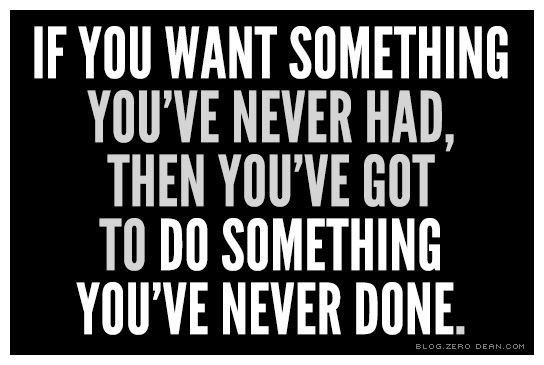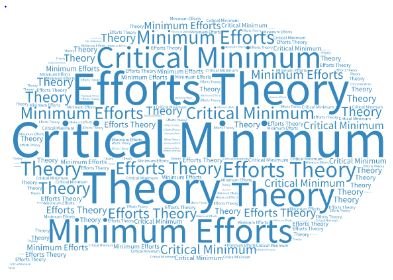Why Changing is Hard & What You Can Do About It (A.K.A. Does Visualization Work?)

It's past midnight.
As if in a daze, your feet carry you to the refrigerator. You open it and there, sitting with a glowing halo around it, is a luscious piece of chocolate cake whispering your name. You know you shouldn't. You promised yourself you wouldn't. As you begin to consider eating it you realize that your hands have already taken it out of the fridge, procured a fork from somewhere, and shoveled it down your gullet. Sound familiar?

There is one thing that I can say about almost everyone reading this article: you want something. And whatever that something is, it's going to require you to change.
Sure, for most everyday desires minimum effort is required. Buying that book off of Amazon or arranging drinks with friends is something most of us can pull off. Here I'm talking about what most of us consider to be major life goals. Things such as losing weight, traveling more, getting a date, increasing our income, etc. These are the areas where gains are always a struggle.
Why is this the case?
One way to look at it might be to use a computer as an analogy. In computers there's hardware and software. The hardware running in the software takes some input and produces some output. At the simplest level, this is what every computer is and does. It's not any different for human beings. Humans have biological hardware (our bodies, based on the blueprint of our dna) and we have software (our subconscious and conscious programming that controls the majority of our behavior). We get input from our environments, the people around us, and the thoughts we entertain. We produce output in the form of actions. But, though we may have both hardware and software, every behavior that takes place starts with something that happens in the mind.

So the only way to change is to alter the parts of your mind your behaviors are attached to.
But if you change it enough times eventually the machine itself will change, right? Maybe if you can manage to repeat it enough times without resorting to old behavior. But we all know how incredibly difficult that can be. Yet this is what most people try to do and what most diets, exercise regimens, etc. assume. Yet this is what a majority of the self-development industry is based on. If you don't change it's not the method, it's your lack of discipline. This of course, leads you to throw your hands up in resignation and double down on the old behaviors until it's time to begin the cycle again.
It seems that any kind of change always comes down to the mental element, but don't take my word for it. Grielle Oettingen conducted a study at the University of Pennsylvania in which a group of obese people (who were trying to lose weight) were told to visualize how they might react in different situations with food. A year later, those who had had more positive fantasies lost, on average, 26 less pounds. The study was repeated again with those seeking career success and with those after a better romance life, with similar results.
In other words, what you think about really does effect you.
In fact, it may be the simplest and most effective way to change your mind. The question becomes, then, what are we to think or visualize in order to change? According to the aforementioned study , you should imagine a negative outcome (i.e., not completing your goal) rather than a positive one. Right?
Well, not exactly.
Gabriele Oettingen conducted another study that made an attempt at combining the optimism generated from positive visualization with the practicality of negative visualization. The procedure she developed is as follows. To prepare:
1.) Think about something you want to achieve.
2.) Imagine/fantasize about reaching your goal, noting the top to benefits of achieving it.
3.) Reflect on the obstacles to accomplishment, noting the top two.
Here's where the magic comes in:
4.) Reflect on the first benefit.
5.) Immediately after, think about the biggest barrier and how you would react to it.
6.) Repeat the process for the second benefit and the second barrier.
The studies showed that this technique was far more effective than fantasizing about a positive outcome or thinking about barriers to success.

But the powers of visualization don't stop there. As it turns out, visualizing yourself doing the process that will lead to your goal makes it more likely that you'll accomplish your goal. In a study by Liam Pham and Shelly Taylor at the University of California, students who imagined themselves getting a good grade didn't do as well as a control group who acted as normal (showing again that visualizing positive goals is not always effective by itself). However, when asked to visualize exactly when and where they would study, students did better than both the control group and the positive visualizers. Somewhat randomly, students who imagined themselves doing the actions needed from a third person perspective were more successful than those that imagined it from a first person perspective.
As it turns out, visualization does work after all.... if used correctly.
So the night before you have a face off with that slice of cake, you can use these tools to getting you a fighting chance. As far as the other possibilities, well, use your imagination.

Good Post! Enjoyed reading it :)
I find that visualization helps me to write a better post, so I always visualize before I start writing.